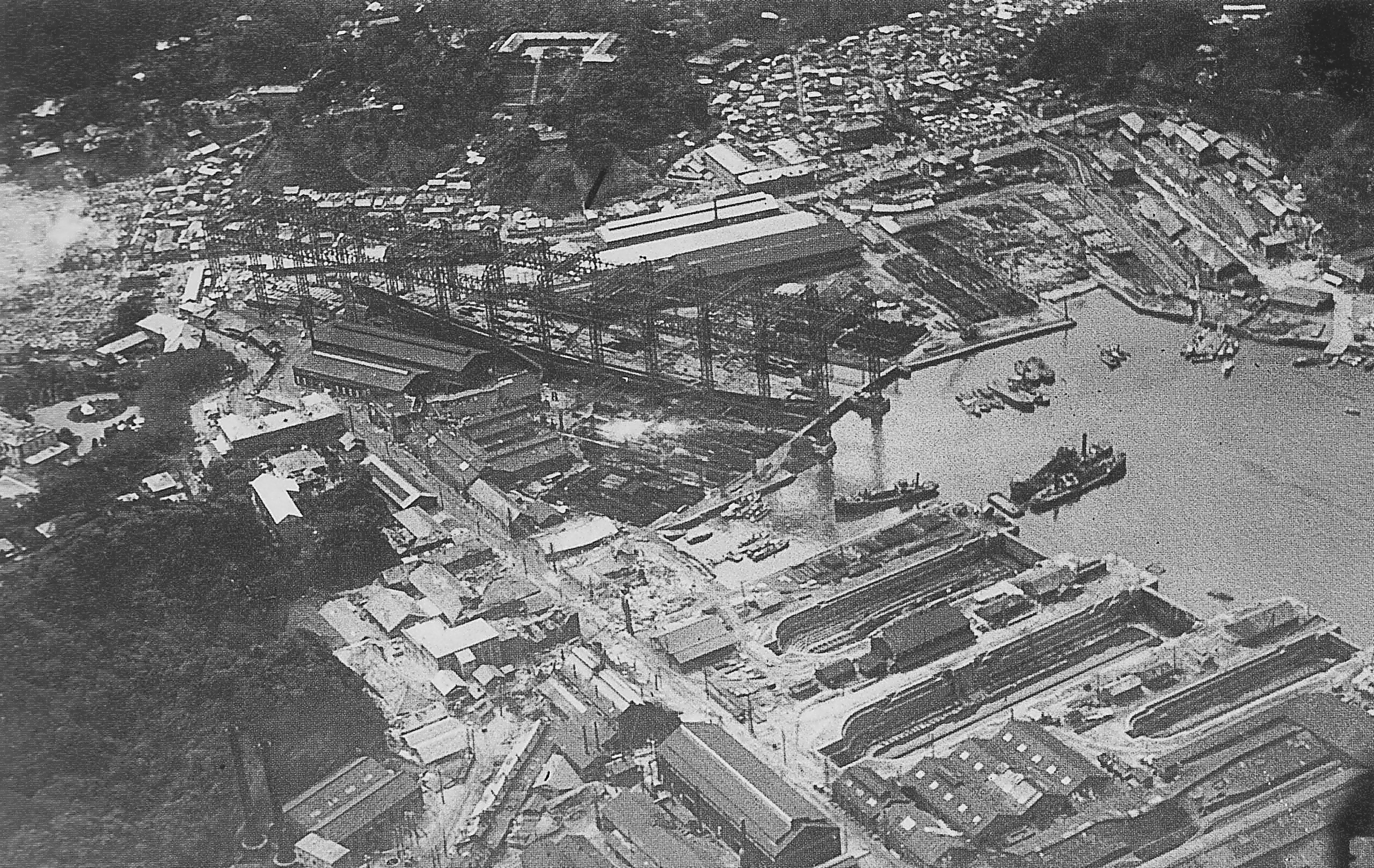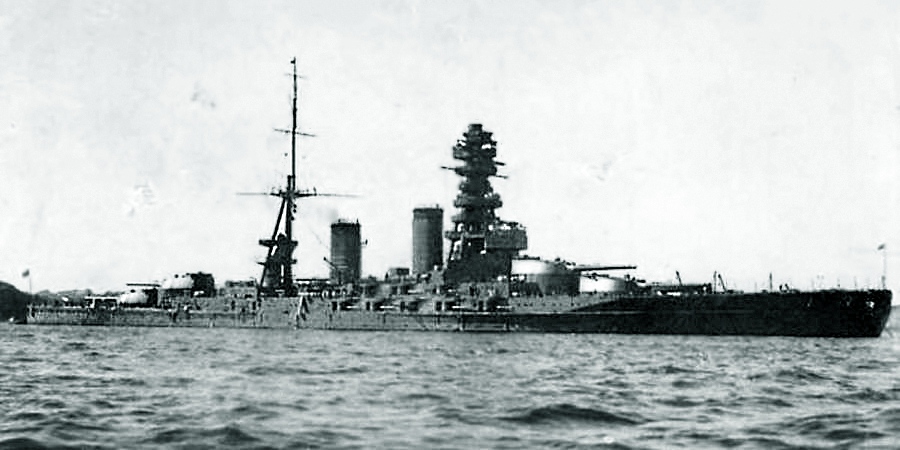|
Kawachi-class Battleship
The was a two-ship class of dreadnought battleships built for the Imperial Japanese Navy (IJN) in the first decade of the 20th century. Both ships bombarded German fortifications at Tsingtao during the Battle of Tsingtao in 1914, but saw no other combat in World War I. sank in 1918 after an explosion in her ammunition magazine with the loss of over 600 officers and crewmen. was disarmed in 1922 and converted into a target ship two years later to meet the terms of the Washington Naval Treaty and served until she was sunk in 1945 by American carrier aircraft. The ship was refloated after the war and scrapped in 1946–1947. Background The ''Kawachi'' class was ordered on 22 June 1907 under the 1907 Warship Supplement Program after the Russo-Japanese War as Japan's first dreadnoughts,Lengerer, p. 74 although their construction was delayed by a severe depression. They were one of the first steps in the fulfillment of the recently adopted Eight-Eight Fleet Program that requ ... [...More Info...] [...Related Items...] OR: [Wikipedia] [Google] [Baidu] |
Yokosuka Naval Arsenal
was one of four principal naval shipyards owned and operated by the Imperial Japanese Navy, and was located at Yokosuka, Kanagawa prefecture on Tokyo Bay, south of Yokohama. History In 1866, the Tokugawa shogunate government established the ''Yokosuka Seisakusho'', a military arsenal and naval base, with the help of foreign engineers, including the French naval architect Léonce Verny. The new facility was intended to produce modern, western-style warships and equipment for the Tokugawa navy. The construction of the arsenal was an important first step for the modernization of Japan's industry. Modern buildings, an aqueduct, foundry, brick factories, technical schools to train Japanese technicians were established. After the Boshin War and the Meiji Restoration, the new Meiji government took over control of the facility in 1871, renaming it the ''Yokosuka Zosenjo'' (Yokosuka Shipyards). The first dry dock was opened in 1871, and is still in operation today. Japan's first d ... [...More Info...] [...Related Items...] OR: [Wikipedia] [Google] [Baidu] |
Dreadnought Battleship
The dreadnought (alternatively spelled dreadnaught) was the predominant type of battleship in the early 20th century. The first of the kind, the Royal Navy's , had such an impact when launched in 1906 that similar battleships built after her were referred to as "dreadnoughts", and earlier battleships became known as pre-dreadnoughts. Her design had two revolutionary features: an "all-big-gun" armament scheme, with an unprecedented number of heavy-calibre guns, and steam turbine propulsion. As dreadnoughts became a crucial symbol of national power, the arrival of these new warships renewed the naval arms race between the United Kingdom and Germany. Dreadnought races sprang up around the world, including in South America, lasting up to the beginning of World War I. Successive designs increased rapidly in size and made use of improvements in armament, armour and propulsion throughout the dreadnought era. Within five years, new battleships outclassed ''Dreadnought'' herself. Thes ... [...More Info...] [...Related Items...] OR: [Wikipedia] [Google] [Baidu] |
Armored Cruiser
The armored cruiser was a type of warship of the late 19th and early 20th centuries. It was designed like other types of cruisers to operate as a long-range, independent warship, capable of defeating any ship apart from a battleship and fast enough to outrun any battleship it encountered. For many decades, naval technology had not advanced far enough for designers to produce a cruiser which combined an armored belt with the long range and high speed required to fulfill its mission. For this reason, beginning in the 1880s and 1890s, many navies preferred to build protected cruisers, which only relied on a light armored deck to protect the vital parts of the ship. However, by the late 1880s, the development of modern rapid-fire breech-loading cannon and high-explosive shells made the reintroduction of side armor a necessity. The invention of face-hardened armor in the mid-1890s offered effective protection with less weight than previously. Varying in size, the armored cruiser was ... [...More Info...] [...Related Items...] OR: [Wikipedia] [Google] [Baidu] |
Eight-Eight Fleet Program
The was a Japanese naval strategy formulated for the development of the Imperial Japanese Navy in the first quarter of the 20th century, which stipulated that the navy should include eight first-class battleships and eight armoured cruisers or battlecruisers. History and development The concept of the "Eight-Eight Fleet" originated in the aftermath of the Russo-Japanese War with the 1907 Imperial Defense Policy between the Japanese government and the competing services of the Army and Navy. The policy called for the construction of a battle fleet of eight modern battleships of 20,000 tons each and eight modern armored cruisers of 18,000 tons each. These were to be complemented by the construction of several lesser warship types, including cruisers and destroyers. The plan was inspired by the Mahanian doctrine of Satō Tetsutarō who advocated that Japanese security could only be guaranteed by a strong navy. Satō argued that to ensure security, Japan should be capable of def ... [...More Info...] [...Related Items...] OR: [Wikipedia] [Google] [Baidu] |
Depression (economics)
An economic depression is a period of carried long-term economical downturn that is result of lowered economic activity in one major or more national economies. Economic depression maybe related to one specific country were there is some economic crisis that has worsened but most often reflexes historically the American Great Depression and similar economic status that may be recognized as existing at some country, several countries or even in many countries. It is often understood in economics that economic crisis and the following recession that maybe named economic depression are part of economic cycles where slowdown of economy follows the economic growth and vice versa. It is a result of more severe economic problems or a ''downturn'' than the recession itself, which is a slowdown in economic activity over the course of the normal business cycle of growing economy. Economic depressions maybe also characterized by their length or duration, and maybe showing increases in unemplo ... [...More Info...] [...Related Items...] OR: [Wikipedia] [Google] [Baidu] |
Russo-Japanese War
The Russo-Japanese War ( ja, 日露戦争, Nichiro sensō, Japanese-Russian War; russian: Ру́сско-япóнская войнá, Rússko-yapónskaya voyná) was fought between the Empire of Japan and the Russian Empire during 1904 and 1905 over rival imperial ambitions in Manchuria and the Korean Empire. The major theatres of military operations were located in Liaodong Peninsula and Mukden in Southern Manchuria, and the Yellow Sea and the Sea of Japan. Russia sought a warm-water port on the Pacific Ocean both for its navy and for maritime trade. Vladivostok remained ice-free and operational only during the summer; Port Arthur, a naval base in Liaodong Province leased to Russia by the Qing dynasty of China from 1897, was operational year round. Russia had pursued an expansionist policy east of the Urals, in Siberia and the Far East, since the reign of Ivan the Terrible in the 16th century. Since the end of the First Sino-Japanese War in 1895, Japan had feared Russia ... [...More Info...] [...Related Items...] OR: [Wikipedia] [Google] [Baidu] |
Ship Breaking
Ship-breaking (also known as ship recycling, ship demolition, ship dismantling, or ship cracking) is a type of ship disposal involving the breaking up of ships for either a source of parts, which can be sold for re-use, or for the extraction of raw materials, chiefly scrap. Modern ships have a lifespan of 25 to 30 years before corrosion, metal fatigue and a lack of parts render them uneconomical to operate. Ship-breaking allows the materials from the ship, especially steel, to be recycled and made into new products. This lowers the demand for mined iron ore and reduces energy use in the steelmaking process. Fixtures and other equipment on board the vessels can also be reused. While ship-breaking is sustainable, there are concerns about the use by poorer countries without stringent environmental legislation. It is also labour-intensive, and considered one of the world's most dangerous industries. In 2012, roughly 1,250 ocean ships were broken down, and their average age ... [...More Info...] [...Related Items...] OR: [Wikipedia] [Google] [Baidu] |
Marine Salvage
Marine salvage is the process of recovering a ship and its cargo after a shipwreck or other maritime casualty. Salvage may encompass towing, re-floating a vessel, or effecting repairs to a ship. Today, protecting the coastal environment from spillage of oil or other contaminants is a high priority. Before the invention of radio, salvage services would be given to a stricken vessel by any ship that happened to be passing by. Nowadays, most salvage is carried out by specialist salvage firms with dedicated crew and equipment. The legal significance of salvage is that a successful salvor is entitled to a reward, which is a proportion of the total value of the ship and its cargo. The amount of the award is determined subsequently at a "hearing on the merits" by a maritime court in accordance with Articles 13 and 14 of the International Salvage Convention of 1989. The common law concept of salvage was established by the English Admiralty Court, and is defined as "a voluntary succes ... [...More Info...] [...Related Items...] OR: [Wikipedia] [Google] [Baidu] |
Washington Naval Treaty
The Washington Naval Treaty, also known as the Five-Power Treaty, was a treaty signed during 1922 among the major Allies of World War I, which agreed to prevent an arms race by limiting naval construction. It was negotiated at the Washington Naval Conference, held in Washington, D.C., from November 1921 to February 1922, and it was signed by the governments of Great Britain, the United States, France, Italy, and Japan. It limited the construction of battleships, battlecruisers and aircraft carriers by the signatories. The numbers of other categories of warships, including cruisers, destroyers, and submarines, were not limited by the treaty, but those ships were limited to 10,000 tons displacement each. The treaty was concluded on February 6, 1922. Ratifications of that treaty were exchanged in Washington on August 17, 1923, and it was registered in the '' League of Nations Treaty Series'' on April 16, 1924. Later naval arms limitation conferences sought additional limitations ... [...More Info...] [...Related Items...] OR: [Wikipedia] [Google] [Baidu] |
Magazine (artillery)
Magazine is the name for an item or place within which ammunition or other explosive material is stored. It is taken originally from the Arabic word "makhāzin" (مخازن), meaning 'storehouses', via Italian and Middle French. The term is also used for a place where large quantities of ammunition are stored for later distribution, or an ammunition dump. This usage is less common. Field magazines In the early history of tube artillery drawn by horses (and later by mechanized vehicles), ammunition was carried in separate unarmored wagons or vehicles. These soft-skinned vehicles were extremely vulnerable to enemy fire and to explosions caused by a weapons malfunction. Therefore, as part of setting up an artillery battery, a designated place would be used to shelter the ready ammunition. In the case of batteries of towed artillery the temporary magazine would be placed, if possible, in a pit, or natural declivity, or surrounded by sandbags or earthworks. Circumstances might ... [...More Info...] [...Related Items...] OR: [Wikipedia] [Google] [Baidu] |
World War I
World War I (28 July 1914 11 November 1918), often abbreviated as WWI, was one of the deadliest global conflicts in history. Belligerents included much of Europe, the Russian Empire, the United States, and the Ottoman Empire, with fighting occurring throughout Europe, the Middle East, Africa, the Pacific, and parts of Asia. An estimated 9 million soldiers were killed in combat, plus another 23 million wounded, while 5 million civilians died as a result of military action, hunger, and disease. Millions more died in genocides within the Ottoman Empire and in the 1918 influenza pandemic, which was exacerbated by the movement of combatants during the war. Prior to 1914, the European great powers were divided between the Triple Entente (comprising France, Russia, and Britain) and the Triple Alliance (containing Germany, Austria-Hungary, and Italy). Tensions in the Balkans came to a head on 28 June 1914, following the assassination of Archduke Franz Ferdi ... [...More Info...] [...Related Items...] OR: [Wikipedia] [Google] [Baidu] |







.jpg)
.jpg)

